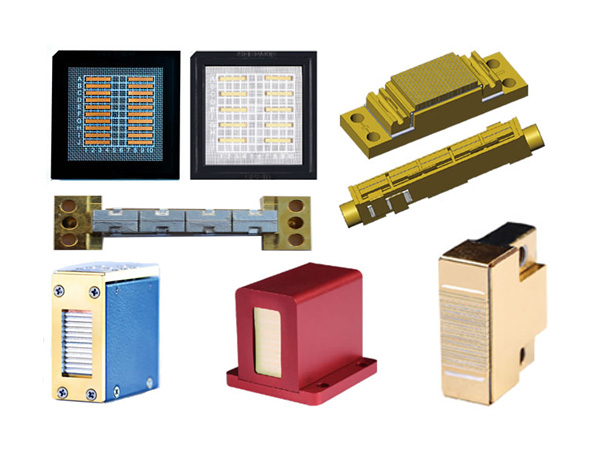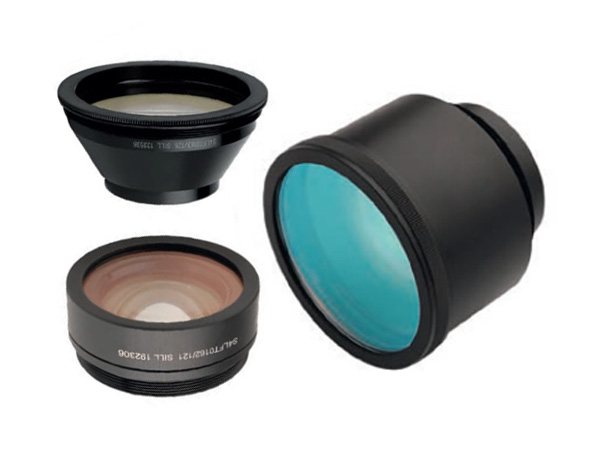LLNL HAPLS petawatt laser reaches highest average power; ready for delivery to ELI Beamlines
The High-Repetition-Rate Advanced Petawatt Laser System (HAPLS), being developed at Lawrence Livermore National Laboratory (LLNL), recently completed a significant milestone: demonstration of continuous operation of an all diode-pumped, high-energy femtosecond petawatt laser system.
With completion of this milestone, the system is ready for delivery and integration at the European Extreme Light Infrastructure Beamlines (link is external) facility project (ELI Beamlines) in the Czech Republic.
HAPLS set a world record for diode-pumped petawatt lasers, with energy reaching 16 joules (J) and a 28 femtosecond (fs) pulse duration (equivalent to ~0.5 petawatt/pulse) at a 3.3 hertz (Hz) repetition rate (3.3 times per second).
In just three years, HAPLS went from concept to a fully integrated and record-breaking product. HAPLS represents a new generation of application-enabling diode-pumped, high-energy and high-peak-power laser systems with innovative technologies originating from the Department of Energy (link is external)'s fusion laser research and development.
"Lawrence Livermore takes pride in pushing science and technology to regimes never achieved before," LLNL Director Bill Goldstein said. "Twenty years ago, LLNL pioneered the first petawatt laser, the NOVA Petawatt, representing a quantum leap forward in peak power. Today, HAPLS leads a new generation of petawatt lasers, with capabilities not seen before."
In the decades since high-power lasers were introduced, they have illuminated entirely new fields of scientific endeavor, in addition to making profound impacts on society. When petawatt peak power pulses are focused to a high intensity on a target, they generate secondary sources such as electromagnetic radiation (for example, high-brightness X-rays) or accelerate charged particles (electrons, protons or ions), enabling unparalleled access to a variety of research areas, including time-resolved proton and X-ray radiography, laboratory astrophysics and other basic science and medical applications for cancer treatments, in addition to national security applications and industrial processes such as nondestructive evaluation of materials and laser fusion.
Up to now, proof-of-principle experiments with single-shot lasers have provided a glimpse into this arena of transformational applications, but to commercially explore these areas a high-repetition-rate petawatt laser is needed.
"The high-repetition-rate of the HAPLS system is a watershed moment for the community," said Constantin Haefner, LLNL's program director for Advanced Photon Technologies (APT). "HAPLS is the first petawatt laser to truly provide application-enabling repetition rates."
Drawing on LLNL's decades of cutting-edge laser research and development led to the key advancements that distinguish HAPLS from other petawatt lasers. Those advancements include HAPLS' ability to reach petawatt power levels while maintaining an unprecedented pulse rate; development of the world's highest peak power diode arrays, driven by a Livermore-developed pulsed power system; a pump laser generating up to 200 J at a 10 Hz repetition rate; a gas-cooled short-pulse titanium-doped sapphire amplifier; a sophisticated control system with a high level of automation including auto-alignment capability, fast laser startup, performance tracking and machine safety; dual chirped-pulse-amplification high-contrast short-pulse front end; and a gigashot laser pump source for pumping the short-pulse preamplifiers. In addition, HAPLS is to be the most compact petawatt laser ever built.
This expertise is why ELI Beamlines looked to Livermore to develop HAPLS. "It was quite straightforward," said Roman Hvezda, ELI Beamlines project manager. "Given the design requirements, nobody else could deliver this system in such a short time on schedule and on budget. It's a great benefit to be able to cooperate with Livermore, a well-established lab, and this will be a basis for continued cooperation in the future."
This cooperation was daily during construction, with LLNL and ELI Beamlines scientists and engineers working side by side on all parts of the laser system.
"One of the real successes of this endeavor was that very early on, the client was fully integrated into the commissioning and operation of this laser," Haefner said. "This provided hands-on training and expertise right out of the gate, helping to ensure operational success once the laser is installed at ELI Beamlines. We look at this as a long-term and enduring partnership."
Bedrich Rus, ELI Beamlines scientific coordinator for Laser Technology, agrees. "This was never a standard client-supplier relationship," he said. "We have had about 10 people at LLNL - this integration is not only a very positive added value for the future operation of the facility, it's been a great experience for their careers and development."
In the coming months, HAPLS will be transferred to ELI Beamlines, where it will be integrated into the facility's laser beam transport and control systems, then brought up to full design specification - delivery of pulses with peak power exceeding 1 petawatt (quadrillion watts) firing at 10 Hz, breaking its own record and making it the world's highest average power petawatt system. ELI plans to make HAPLS available by 2018 to the international science user community to conduct the first experiments using the laser.
"HAPLS was a very fast-paced project," Haefner said. "In only three years it pushed the cutting edge in high-power short-pulse lasers more than tenfold, incorporating a completely new system approach. To do so, Livermore worked closely with industry to similarly advance the state of the art - and many of those joint Livermore/industry innovations are already on the market. These partnerships can be incredibly synergistic, resulting in successful and societal impactful technologies like HAPLS."
 English
English Français
Français Deutsch
Deutsch euskara
euskara Русский язык
Русский язык Italiano
Italiano Português
Português Nederlands
Nederlands Polski
Polski Greek
Greek Lietuva
Lietuva Türkçe
Türkçe 日本語
日本語 한어
한어 中文
中文 தாமில்
தாமில் فارسی
فارسی हिंदी
हिंदी Tiếng Việt
Tiếng Việt ภาษาไทย
ภาษาไทย Pilipino
Pilipino Indonesia
Indonesia தாமில்
தாமில்





